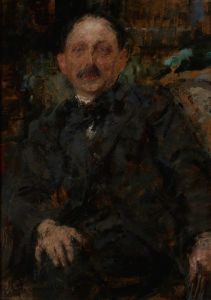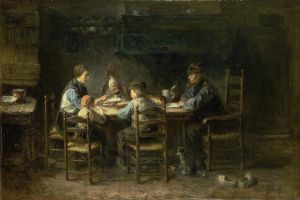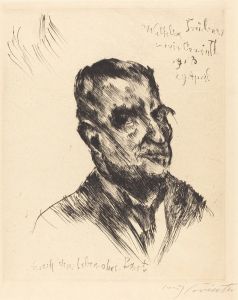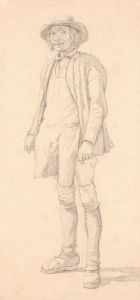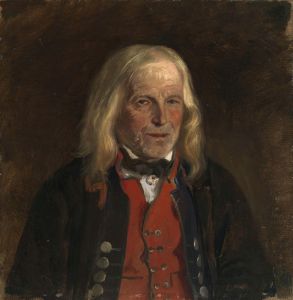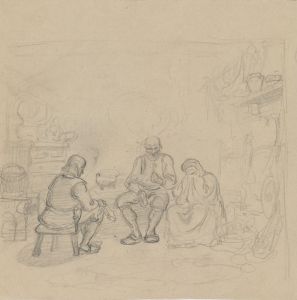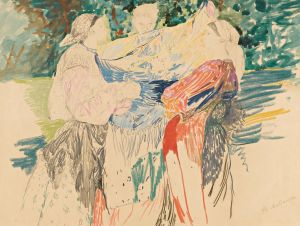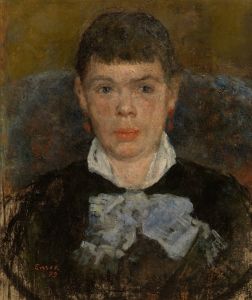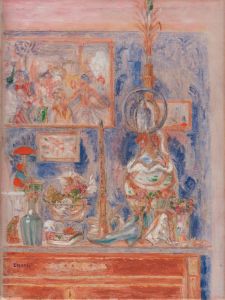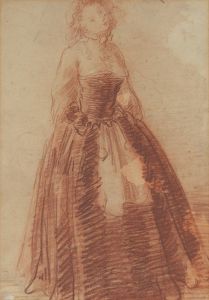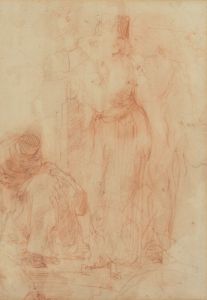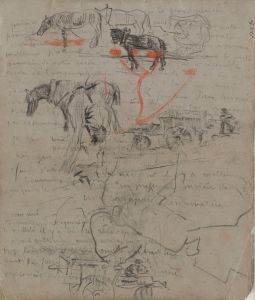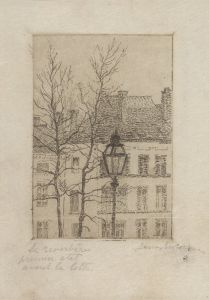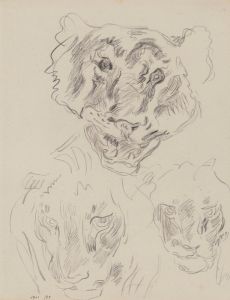
The Painter Jean François Millet
A hand-painted replica of James Ensor’s masterpiece The Painter Jean François Millet, meticulously crafted by professional artists to capture the true essence of the original. Each piece is created with museum-quality canvas and rare mineral pigments, carefully painted by experienced artists with delicate brushstrokes and rich, layered colors to perfectly recreate the texture of the original artwork. Unlike machine-printed reproductions, this hand-painted version brings the painting to life, infused with the artist’s emotions and skill in every stroke. Whether for personal collection or home decoration, it instantly elevates the artistic atmosphere of any space.
James Ensor's painting The Painter Jean-François Millet is a work by the renowned Belgian artist James Ensor (1860–1949). Ensor, a key figure in the Symbolist and Expressionist movements, is best known for his innovative and often satirical works that challenged traditional artistic conventions. This particular painting pays homage to the French Realist painter Jean-François Millet (1814–1875), who was celebrated for his depictions of rural life and the dignity of labor.
The painting, created in 1885, reflects Ensor's admiration for Millet's artistic contributions. Millet was a central figure in the Barbizon School and is widely recognized for works such as The Gleaners and The Angelus, which portrayed the struggles and resilience of peasants. Ensor, though stylistically distinct from Millet, shared an interest in exploring the human condition and the lives of ordinary people, albeit through a more fantastical and often grotesque lens.
In The Painter Jean-François Millet, Ensor depicts Millet in a manner that suggests reverence for the older artist's legacy. The painting is executed in Ensor's early style, which was influenced by traditional academic techniques and the works of Old Masters. This period of Ensor's career was marked by a more restrained and realistic approach, before he transitioned to the bold, colorful, and eccentric style for which he later became famous.
The composition of the painting features Millet in a contemplative pose, possibly alluding to his role as a thoughtful observer of rural life. Ensor's choice to focus on Millet as a subject underscores the younger artist's respect for Millet's dedication to portraying the realities of the working class. While Ensor's later works often incorporated satirical and fantastical elements, this painting remains a sincere tribute to an artist he admired.
The Painter Jean-François Millet is part of Ensor's broader body of work that reflects his engagement with art history and his interest in paying homage to influential figures. The painting is housed in the Royal Museum of Fine Arts in Antwerp, Belgium, where it is preserved as part of Ensor's artistic legacy.
This work provides insight into Ensor's early artistic development and his connections to the broader European art tradition. By choosing Millet as a subject, Ensor not only acknowledged the French painter's impact but also positioned himself within a lineage of artists who sought to capture the essence of humanity through their art.





